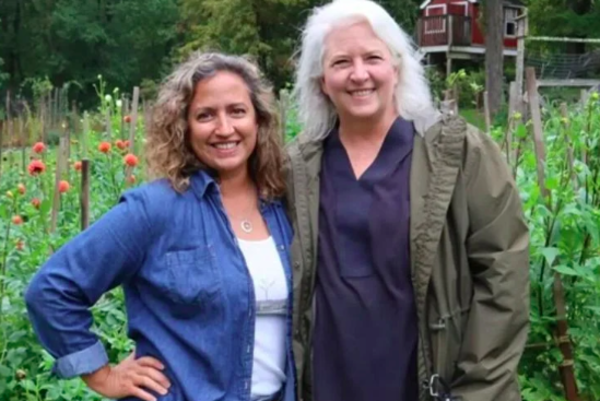While the COVID-19 era has seen tremendous loss on the human front, Mother Nature has quietly chalked up a few wins. As the world rises and opens up lotus-like from the COVID mud with all the human hustle and bustle that entails, the budding geniuses behind the Slow Flowers Movement are optimistic that some eco-benefits of the virus’s earth-shaking effects will be long-term.
“I hesitate to use an over-used term, but there was surely a ‘silver lining’ to the pandemic,” said Debra Prinzing, a Seattle-based gardening writer and domestic flower advocate who coined the phrase “slow flowers” in 2013. At its most basic, she explained, slow flowers advocates cultivating flowers grown with sustainable farming practices, harvested in their natural season of bloom, sourced as close to you as possible, and produced by florists who are using green, chemical-free design techniques. “During lockdown, not only did millions of Americans connect with nature like never before,” she observed, “but the flower industry recognized and reaped the benefits of turning to locally grown varieties.”

Like “slow food,” which Ms. Prinzing acknowledges inspired her movement, the philosophy is that it’s best to “wait” to enjoy a flower or an edible to be in season. Speaking of waiting, ongoing supply chain issues have disrupted the usual tsunami of imported flowers into the U.S. market, resulting in reliance and recognition of American flower growers by everyone from floral designers to interior decorators to June brides.
The first day of the event will be held at Maple Grove Farm. It will be introduced by George Bianco, Maple Grove Farm owner and co-chair of the board of directors of the Westchester Land Trust. The keynote speaker will be Xenia D’Ambrosi, founder and proprietor of Sweet Earth Co., a flourishing floral and garden design studio located on her sustainable flower farm in Pound Ridge.
“Our themes evolve each year, according to the zeitgeist,” offered Ms. Prinzing. “Last year’s in San Francisco was ‘floral immersion’ as everyone felt such deprivation from COVID and the 2020 Summit had been canceled.” This year’s summit motif is “flowers as artists muse” and will feature such artisans as TJ McGrath demonstrating large-scale foam-free botanical sculptures, Frances Palmer discussing her flower-inspired ceramics, and Philippe Gouze, the celebrated floral designer at the restaurant Blue Hill at Stone Barns.
“The Slow Flowers movement is at the intersection of farming and design,” explained Ms. Prinzing. “Floral designers and growers constantly influence each other.”
This imbalance was no accident.
Beginning decades ago, in an attempt to slow the flow of drugs into the U.S. from Bolivia, Colombia, Ecuador, and Peru, the U.S. set about reducing or eliminating tariffs on imports from the region, hoping to incentivize farmers to replace illicit coca production with legitimate, and safer, alternatives like flowers. Colombia alone supplies 60% of U.S. imports of fresh-cut flowers.
“Another issue was that in trying to perfect their products, the Latin Americans were spraying their flowers with huge amounts of pesticides,” added Ms. D’Ambrosi. “The flowers coming across the border never had any bugs or evidence of bugs.”
The activism of slow flower pioneers like Ms. Prinzing, said Ms. D’Ambrosi, has addressed how the American floral economy had taken such a hit financially and environmentally.
As the flowers as muse theme attest, slow flowers are not only eco-friendly but can be fabulous. Part of Ms. D’Ambrosi’s presentation is demonstrating making hand-tied bouquets using locally grown, seasonal flowers. That will undoubtedly be one of the prettiest sights one could see — next to dolphins showing off their high-flying acrobatics on the Grand Canal.
For more information:
Slow Flowers Summit
[email protected]
www.slowflowerssummit.com
